With Ingrid Klimke
Photos by Roz Neave
Ingrid Klimke is one of those rarest of creatures – the complete horsewoman. She was part of the German Gold Medal Eventing Team at Beijing. At the 2009 German Young Horse Championships she qualified horses in three disciplines, placing in dressage and eventing and winning the Young Riding Horse class for three year olds. She has also won Grand Prix dressage classes, and World Cup dressage qualifiers.
The Horse Magazine Sporthorse Tour group was lucky enough to sit in on a little demonstration of Ingrid’s training methods, and she gave a little demonstration of training ‘skinnies’ with her up and coming one star ride, the Trakehner Tabasco… and yeah, using the furniture around the arena was a little German joke!
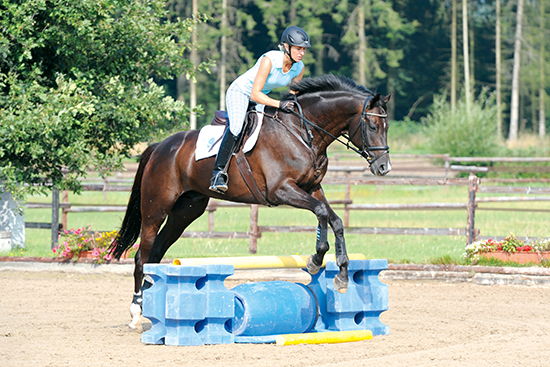
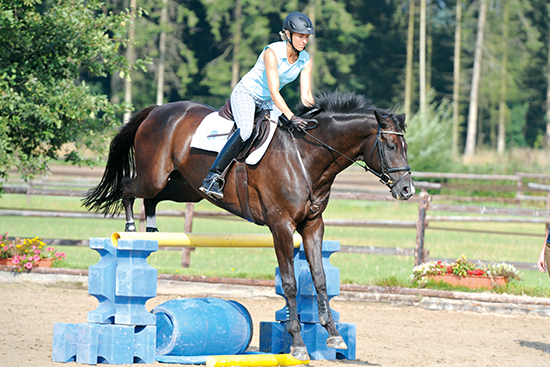
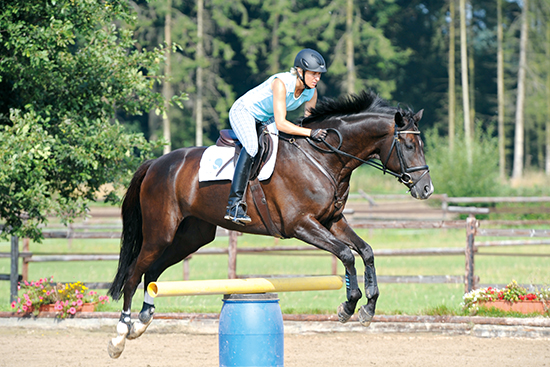
As with all of Ingrid’s training methods for any discipline, the work is logical and progressive, quietly developing the horse’s abilities and confidence at the same time…
“We start out with the obstacle wide with a ground line, and we have the double blocks and first approach with these small inviting fences. The next step is to take one of these blocks away then later you take all the blocks away, and you only have the rail.”
How long would that normally take you to teach the horse to read fences like these?
“Normally if you start like this, and then gradually increase the difficulty, it works. Tabasco is already on one star level, but even with the young ones, if you first take them with these guiding rails then there is no chance of a run out and you can play with them.”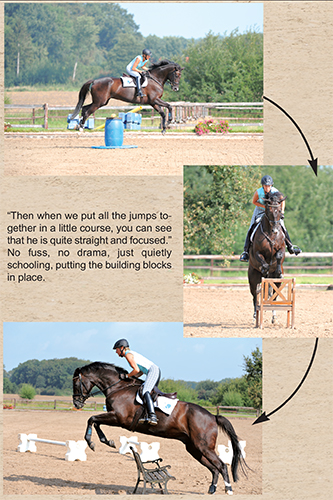
“It’s good to use side rails. As long as you go step by step, then you feel them looking for one side, then you guide them with the rails, and not only guide them in the front but you also guide them behind so they know absolutely that they approach the obstacle straight, and not land to the left or the right and start to turn. They must learn that you focus on a straight approach and a straight landing, then you turn them whichever way you want, but don’t turn over the jump. Some horses like to cut the corner, or approach straight and always land a little bit to the left, and if they land a half metre to the left, and it is a turning line on course, it is that half metre that you miss to get your right distance to the next fence.”
“So the first thing is to make sure, straight approach, straight landing, then it is me as the rider who says, we go a little bit to the left or a little to the right. We do a turn or we stay straight, but the horse must be totally straight after the fence.”
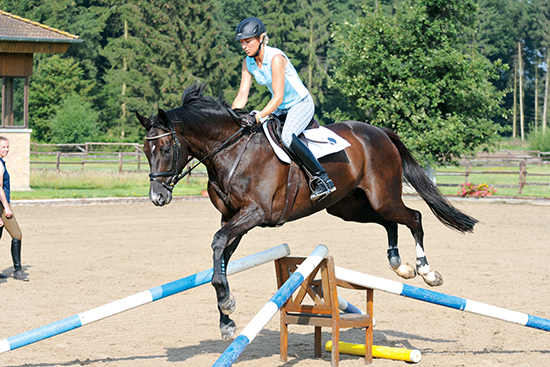
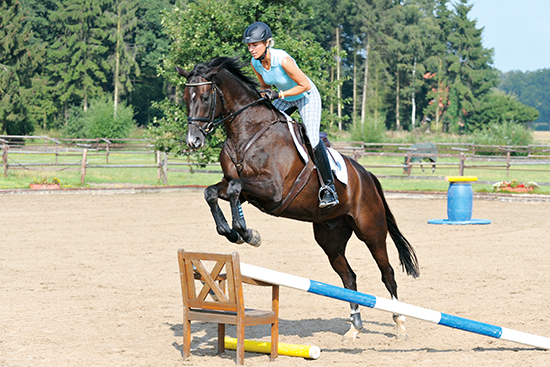
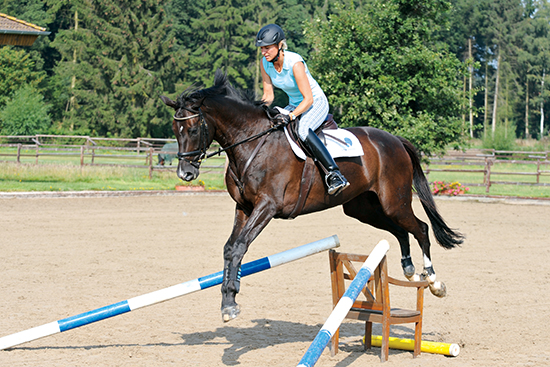
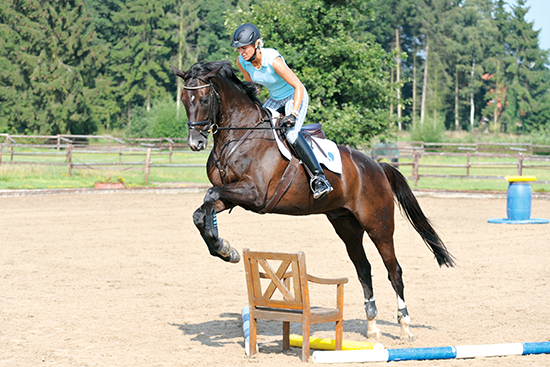
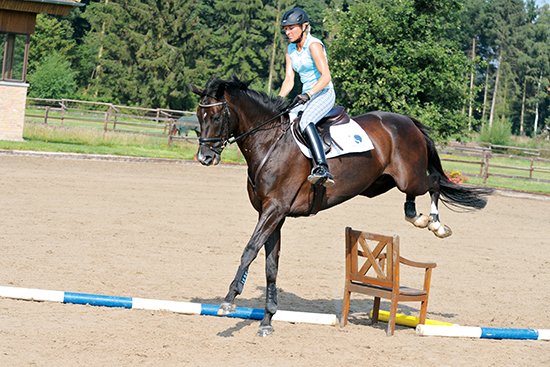
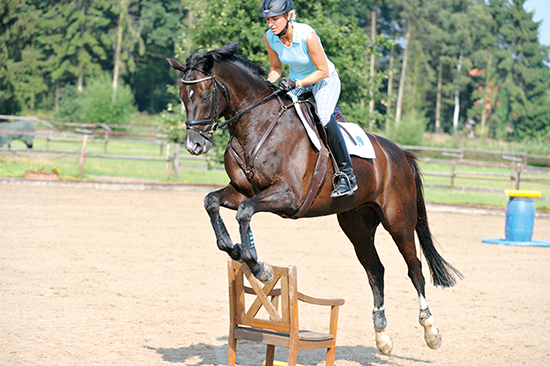
When he was drifting a bit you used guiding poles on landing…
“Exactly. I thought I was finished, then I felt he was drifting, that’s why I put the rails behind, you can see it in this photo, he says, I turn here, and I tried to hold him but the shoulder was free, the shoulder was drifting to the right – so the outside rein is very important too. It is important to keep the shoulder under control. That’s why I put the rails up again and put them on the ground to help him, rails on either side of the fence, so it is like a diagonal. I use a lot of rails because if you try to correct it as the rider, like I did here, you instinctively try to turn him to the left, but the shoulder was gone already. As a rider you don’t have so much of a chance in the last seconds to influence the horse, but the rails show the horse and makes it easier for the rider, because the horse must focus on the rail and learn…”
This article first appeared in the January 2010 issue of THM.
